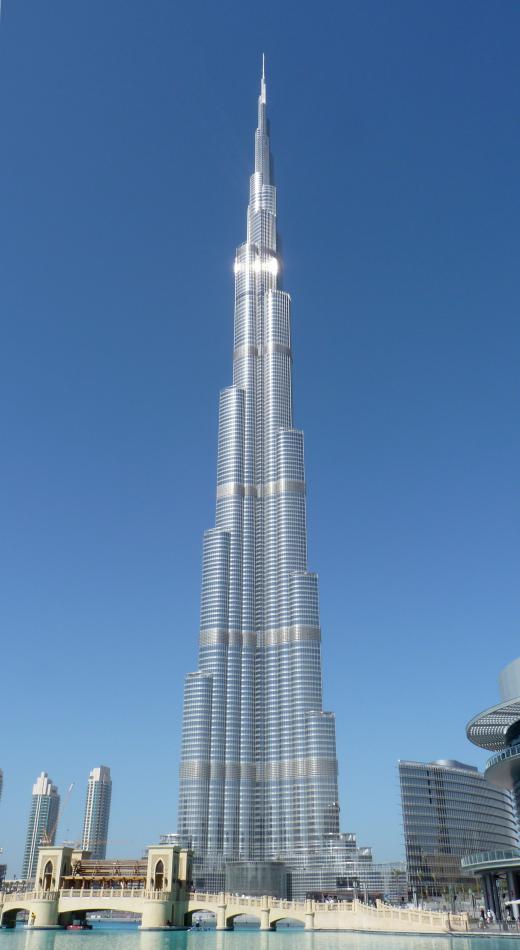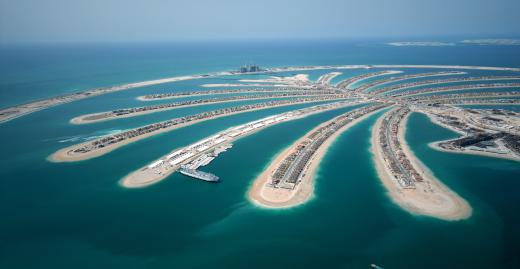What are Some Future Architectural Trends?
 Michael Anissimov
Michael Anissimov
At the cutting-edge of contemporary architecture, there are many trends, but three stand out: height, sustainability, and bio-inspired designs. Many future architectural trends are likely to unfold, but these three are currently popular, and likely to remain so for at some time, especially sustainability.
On the height side of things, a new movement towards 2,000+ ft skyscrapers seems to be initiated in the late 2000s, launched in part by the construction of Burj Dubai ("Dubai Tower"), a huge tower in the Arab Emirate of Dubai, near Saudi Arabia. Burj Dubai also heralds what is likely to remain one of the popular future architectural trends, bio-inspired design, as the floor plan resembles the structure of a lotus flower. When completed, Burj Dubai will at least 818 m (2,684 ft), more than half a mile and approaching a kilometer in height.

Over a dozen other supertall buildings are planned around the world for the 2010s. The 541 m (1776 ft) Freedom Tower, for instance, will be constructed on the former site of the World Trade Center towers. The tower is expected to be ready for occupancy around 2012. Another supertall tower, Al Burj ("The Tower"), is being planned for construction in Dubai. This tower is expected to be 1,400 m (4,593 ft) in height, dwarfing Burj Dubai, and raising many new challenges for designers and engineers. The height may always be increased or decreased before construction is complete.

Another of the future architectural trends just beginning to unfold today is sustainable building. Sustainable building includes eco-friendly materials and design decisions being made by builders to minimize the ecological footprint of a given structure. As humans spend about 75% of their time in buildings on average, even a small increase in efficiency can translate into large energy savings and ecological value. Strategies include passive solar building design, which takes into account the path of the Sun to minimize the need for artificial heating and cooling, excellent insulation, solar panels for roofing, solar heating for pools and other high-volume water applications, and many others.

Bio-inspired future architectural trends include either buildings in ways resembling nature, either for aesthetic, practical, or environmental purposes, or actually integrate living systems into the building, again for either aesthetic, practical, or environmental purposes. For example, the new Academy of Sciences in San Francisco has a "living roof," designed to absorb rainwater that would otherwise tax city drainage systems. The Al Burj tower will include sky-gardens. Additional future architectural trends may involve actually integrating agriculture into urban environments through indoor farming, also called vertical farming.
AS FEATURED ON:
AS FEATURED ON:














Discussion Comments
I went on a walking tour of a restored housing district in my community. One of the spots on the tour was an old grocery building that was being restored and being made into a holistic center for women.
The man who is involved with the restoration was explaining how they were making this building eco-friendly. One example he used is how they would use the rain water draining off certain parts of the building that would feed native plants.
Their whole approach to the renovation of this building was to promote sustainability. I think this is one of the current trends that is catching on across the country and we will begin to see a lot more of this being done.
I live in Kansas City and a few years ago the main branch of the public library downtown built a new parking garage to accommodate their patrons. In order to give it some visual flair they grafted a gigantic photographic skin over one entire side of the garage. It is about four stories high and maybe a few hundred feet long and it looks like a book shelf that is filled with classic titles.
I know that sounds hard to picture but people have probably seen a smaller scale version of this elsewhere. There seems to be a big market these days for cars to have a skin on them which advertises for things. I think that this will be an architectural trend moving into the future. If they can create a covering and make it look like anything under the sun just imagine the potential. Buildings will not have to look just like doors and windows and columns. They can look like anything
@starrynight - Interesting point. But the companies that build the houses need to make a profit too! I think government grants would be the way to go in this case.
One thing I worry about as far as the super-tall building trend is safety. It can't be that easy to evacuate a building that size. What if there is a fire or some other emergency?
I've read a few articles about eco-friendly architecture and I think it is such a great trend! I would love to live in an eco-friendly home powered by solar panels.
However, one thing I've noticed is that this kind of architecture tends to be pretty expensive. What good is building environmentally friendly spaces if the average person has no hope of buying it?
I think it would be nice if the government would give people grants to buy these kinds of houses or if the companies would reduce their prices a little bit. If they care about the environment so much, they should make eco-friendly architecture affordable for the average person.
Post your comments